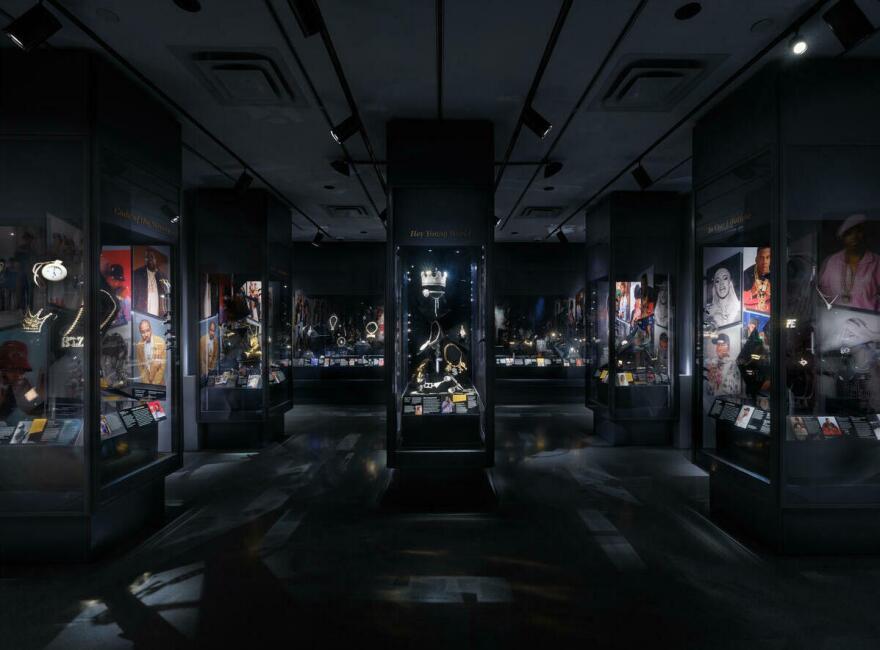Flavor Flav's clock. Nicki Minaj's Barbie pendant. Slick Rick's crown and eyepatch. These are famous symbols of hip-hop. But perhaps the most iconic piece of them all is Ghostface Killah's eagle cuff.
The gold bracelet weighs 5 pounds and features an eagle, wings outstretched, landing on the cuff. And it's on view right now at the American Museum of Natural History in New York.

"I was a really big fan of Wu-Tang," said Kevin "Coach K" Lee, guest curator for the show "Ice Cold: An Exhibition of Hip-Hop Jewelry" and co-founder and chief operating officer of Quality Control Records. "So I remember when [Ghostface] got that piece and showed it — and to see that in person today? It just blew me away."
From chains to diamonds
But the early hip-hop artists didn't start out with giant gold eagles, diamond-encrusted nameplates or Rolexes.
Instead, said music journalist and exhibition guest curator Vikki Tobak, they shopped at small community jewelry stores, usually owned by immigrants. "There weren't many diamonds, just, you know, a gold cap for your tooth, a simple nameplate, just to show success."
From there, it went to Run-DMC's thick gold ropes, pendants like the NAS QB pendant, representing the Queensbridge houses, and the diamond-studded Roc-A-Fella medallion for the record label co-founded by Jay-Z; and eventually onto playful items like A$AP Rocky's jewel-encrusted Lego figure, with fully operational arms and legs.

"Hip-hop jewelry grew up along with the music and the culture," Tobak said.
As hip-hop became more mainstream and the artists became wealthier, the jewelry became more expensive and elaborate.
Not every piece is about wealth
With so many spectacularly shiny objects, it might be easy to miss a more humble one nestled in a case: a rectangular ring with the letter "R" in the center.
It's a Juice Crew ring, loaned by Roxanne Shanté, a radio host and a pioneer of battle rap — her breakout song "Roxanne's Revenge" was recorded when she was 14 and living in Queensbridge.
"Back in the day, a person who had juice had respect and had control over their neighborhood and situations," Shanté said. "So if you saw someone with the Juice Crew ring, then you knew that was a person that you can trust. You knew that was a person you could go to with your problems. So you had to earn it. The Juice ring could never be bought. It had to be given to you."
She said people earned that ring by doing things like helping send a kid to camp or mediating a dispute.
To her, it's a symbol that hip-hop is a family.

Other pieces in the show have African iconography, like a leather pendant worn by a member of De La Soul. Curator Tobak said the exhibition purposefully connects these pieces to other anthropology sections in the museum because the story of hip-hop and jewelry is intrinsically connected to the African diaspora.
"What we choose to put on our body is such a human thing that hip-hop has just taken to the nth degree. And I think that is the bigger, like powerful story here," she said.
Copyright 2024 NPR







